When you want a simple and practical upgrade of the TV sound, the choice often falls on a soundboard. Unfortunately, even the best soundbars have a rather monotonous and flat sound image compared to a traditional stereo system – especially when it comes to music. Modern audio formats and DSP technology do not quite mask the fact that almost all the sound comes straight from the front. It may seem that Sony’s engineers have also taken this into account, because when the Japanese manufacturer was to launch its new soundbar this summer, they also unveiled a new surround system with wireless speakers.
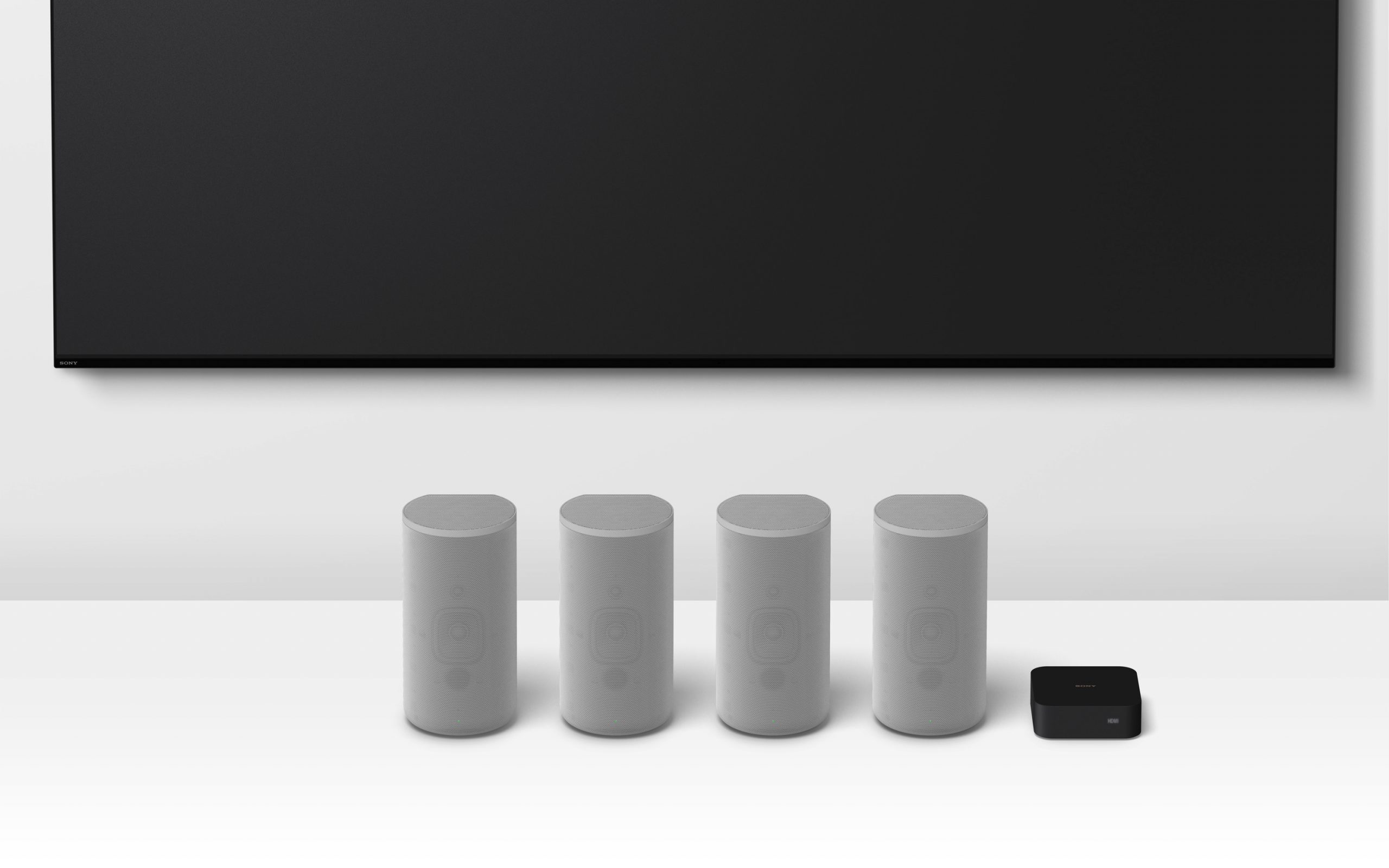
Sony HT-A9: Real surround sound system
If you are among those who see the benefit of a soundbar, but do not want the compromises one clearly entails, then Sony may have exactly what you are looking for, with the HT-A9 speaker system. This consists of four wireless speakers, which communicate with a small, digital central unit that connects to the network, and to the TV with HDMI.
In addition to having drivers in the front, the speakers also have top-mounted drives, directed towards the ceiling. These are used to reproduce the height channels in Dolby Atmos and DTS:X, and send towards the ceiling, whereupon they are reflected down on the listener in the sofa. Thus, it sounds as if the sound is coming from above. The system is of the type 4.0.4, which means four standard channels, no subwoofer, and four height channels.
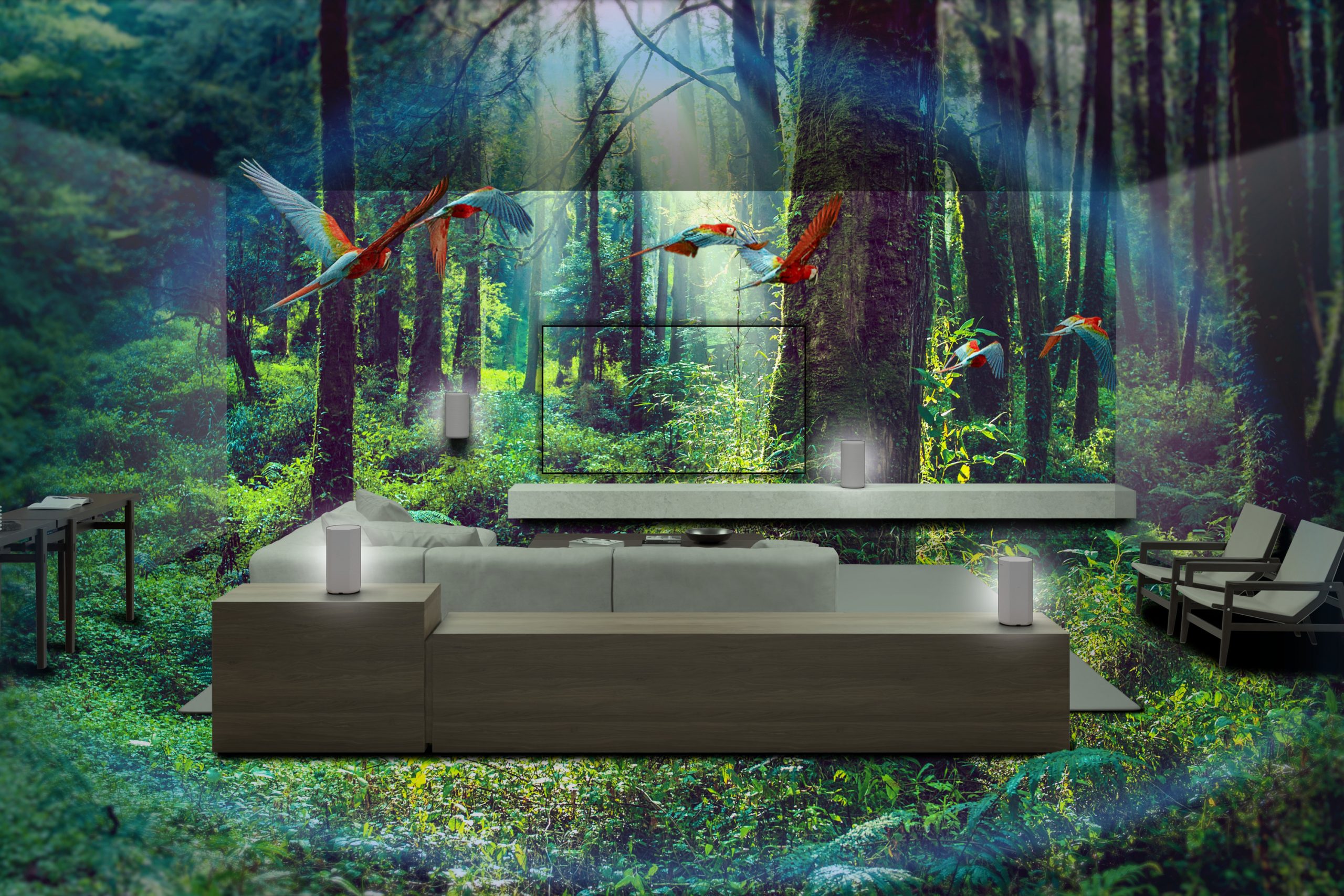
Decor-friendly
But that’s not all. The Sony HT-A9 uses an intelligent 360-degree mapping of the sound in the room, and simulates additional speaker channels between the actual speakers. It should correspond to 12 discrete channels, and Sony claims that the system seamlessly projects a sound image where the objects are placed exactly in the room – regardless of the location of the speakers.
For example, you can place the left front speaker on the TV table, the right one up on a shelf, and the rear speakers where the environment requires it – without having to place them at the same height or distance in relation to each other and listening position. At least that’s what Sony claims. The only thing you need to take care of is that none of the drivers are covered. This means that the speakers cannot be squeezed into a narrow bookshelf, where the top drivers will be blocked by the shelves.
Subwoofer?
As mentioned, the HT-A9 is four speakers, without any subwoofer in the system. Strictly speaking, this should not be necessary, as Sony claims to have worked hard to get enough bass out of the compact speakers. A wireless subwoofer, on the other hand, is offered as an option, and then you can choose between SA-SW3 (GBP 450) and SA-SW5 (GBP 700). We have tested both subwoofers, and our opinion is that you should find room in the budget for one of them.
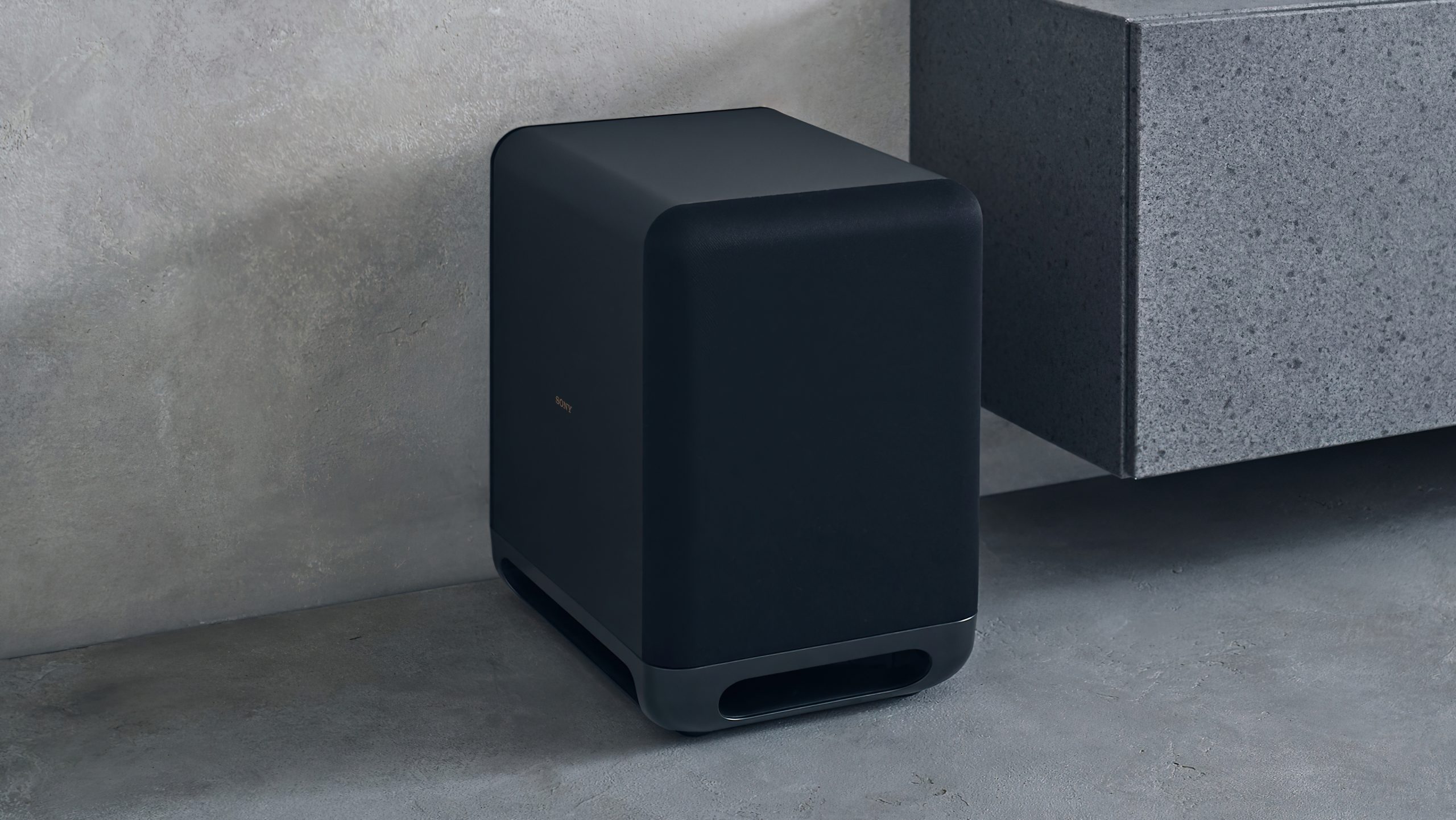
Looks
The speakers are compact, slightly tall cylinders clad in light gray. Whichever of the two subwoofers you choose, both black, it does not have exactly the same design language, and may not appear to be directly made for the speakers. The subwoofers fit better visually with the HT-A7000 soundbar. This is not so bad, as many people want to hide the subwoofer away anyway. But it should be close to the front speakers, so that the speaker setup works best.
Supports most formats
The speakers, which must still be connected to power, communicate with a small central unit. Or a hub, if you will. This has both an HDMI input with support for 4K/120 Hz and 8K/60 Hz, and the HDMI output has audio return of the eARC type. This supports high definition audio from the TV, including Dolby Atmos and DTS: X. To get DTS audio, you need to make sure that the TV can broadcast it, it is not always as hassle-free.
Easy setup
The initial setup is very simple. An on-screen menu on the TV shows that the speakers are paired, then you can select the language (English) and then the Sound Field Optimization, then Start. Some short sound signals come out of the speakers, to measure the sound level, distances and reflections in the room. It’s all over in a few seconds.
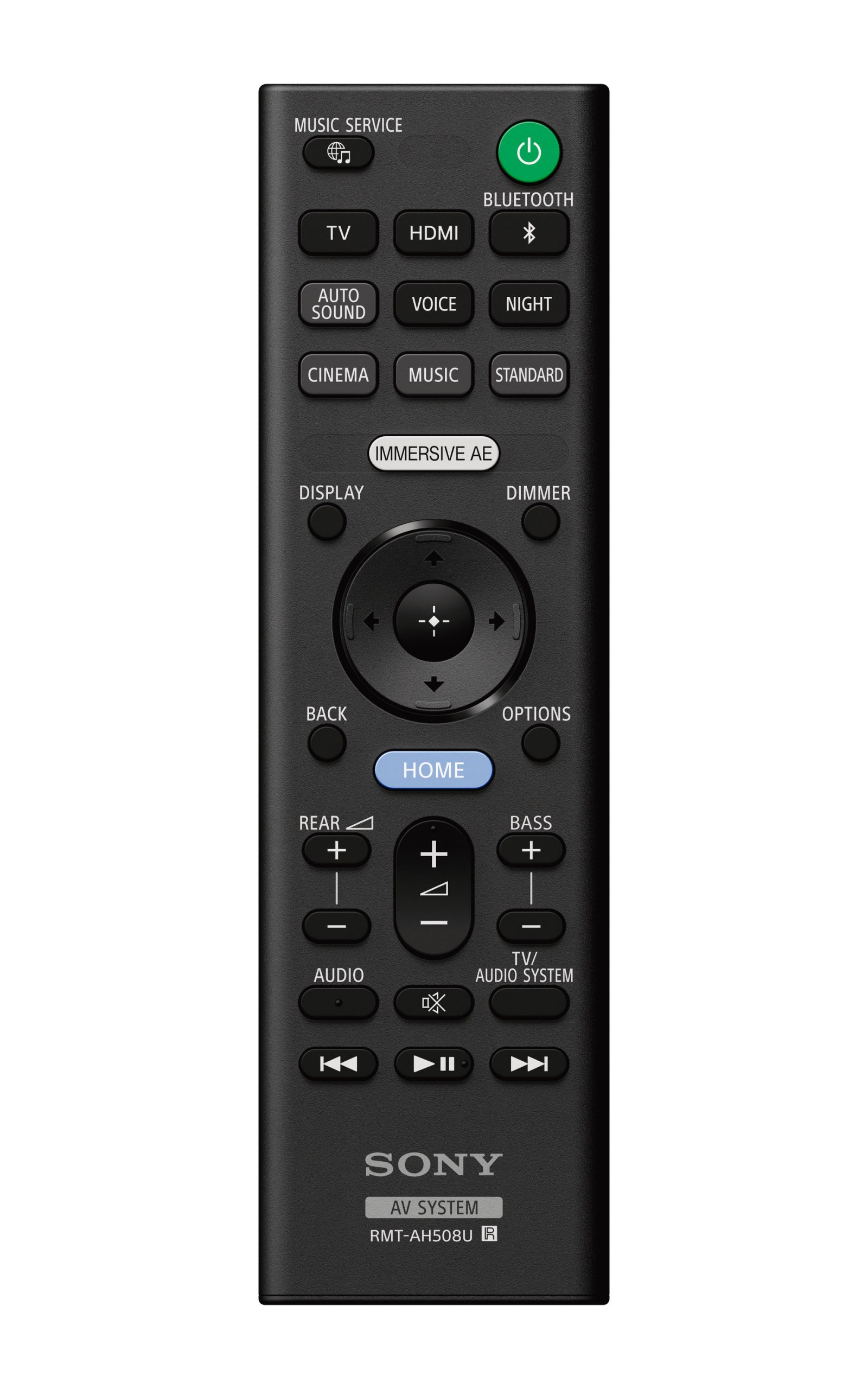
Sold from the first moment
Then comes a demo soundtrack with nature sounds and music, which demonstrates the 360 sound. And the demo is really compelling! Okay, this is a demo that was created to get the most out of the system, but it gives a clear indication of what we have in store. The sound seems totally freed from the physical location of the speakers, it’s like sitting inside a giant bubble of sound. Transparent sound.
For the sake of order, we have both tried with all the speakers placed in the same plane, then we moved the right front speaker and left rear speaker a little down in relation to the others. To see if Sony is really telling the truth about this with location. And it worked surprisingly well, although we must point out that the best thing is still if you get to a symmetrical location.
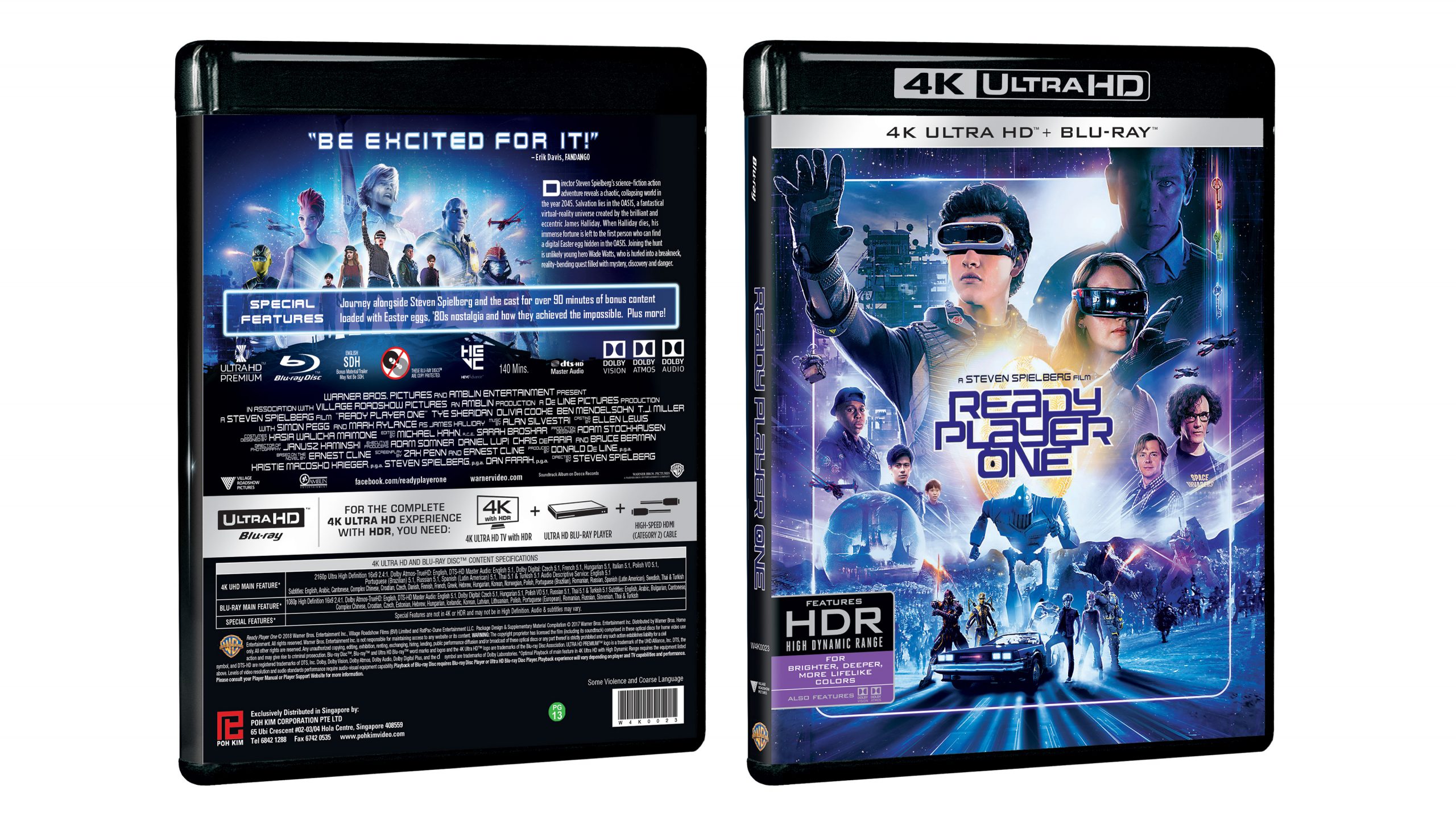
Giant sound on film
Ready Player One on 4K Blu-ray offers an explosive soundtrack, with better dynamics and more air than you get from compressed stream formats. Even without a subwoofer, the HT-SA9 provides an energetic sound experience, with clear dialogues and lots of life and stir in the special effects. The car race at the beginning of the film has violent collisions and screaming V8 engines, and the sound here is greater than with any soundboard we can come up with – including Sony’s own HT-A7000.
Although the bass reproduction is perfectly fine from the speakers alone, there will be no real cinema experiences without a subwoofer. If you want to save some money, you can manage in a smaller room with HT-SW3, but the larger SW5 gives so much more push in the bottom octets that we would put the extra money on the table without blinking. It seems a bit pointless to spend so much money on the speakers, and then have to save some small money on the bass speaker.
Together with the largest sub, the sound system provides an explosive home cinema experience, and such a gigantic sound image, that we can not quite see which soundboard will be able to compete.
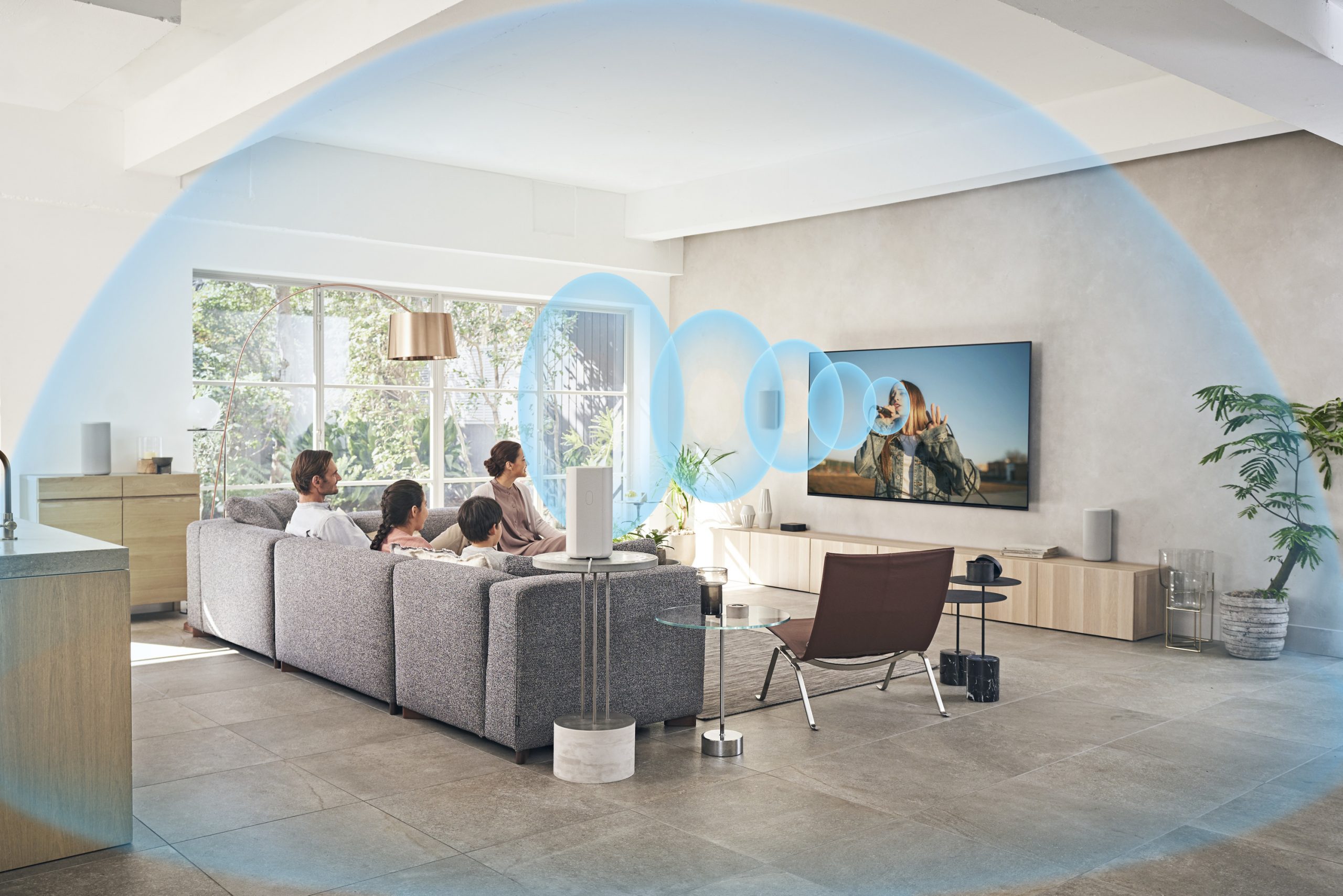
Center channel?
Except for one thing. Namely the center channel. Because no matter how large the soundscape is, we think the dialogues in the middle slide a little outwards to the sides, being placed a little imprecisely in the soundscape. Most soundbars offer better center location than this. We wish Sony would have added the option to add a separate center speaker, if desired.
Actually, they have done just that. If you own a 2021 vintage Sony Bravia TV. Then you can activate Acoustic Center Sync, and the speakers in the TV will help reproduce the important center channel. We tried both the LCD TV X95J and also the OLED TV A80J. And we have to say, they both helped with the placement of the dialogues, but the A80J was clearly the best at this. On it, the entire screen surface is used as a speaker, instead of having drivers placed below and above. This means that the dialogues come from the middle of the picture!
Now we are not going to claim that you have to buy a Sony TV to enjoy the sound of the HT-A9, for this system does more than well enough without. But if do you have such a TV, then we definitely recommend activating Acoustic Center Sync to put the finishing touches on an already exemplary sound experience.
Music
The quality of the sound itself is very good. Great bass – especially with the subwoofer – and extremely airy harmonics make the sound even better than with the HT-A9000 soundbar. The midrange reproduction may not be the most outspoken, but the voices come through nicely nonetheless.
In other words, a great starting point for a good music experience. And the Sony system does not disappoint then either. Nordic Brass Ensembles European Tour on Blu-ray from 2L sounds especially great with DTS-HD MA soundtrack with 24-bit/192 kHz sound quality.
“Woowm what a soundscape!”, Audun exclaims – Here we are in a much larger, more vivid and detailed sound bubble. The Sony speakers do a good job of placing the various instruments, but I’m even more impressed with the realistic feeling of space. It feels more like sitting in the church where the recording was made, rather than “just” listening to a good recording. Here is the stage for many great music experiences, with recordings from 2L and others.
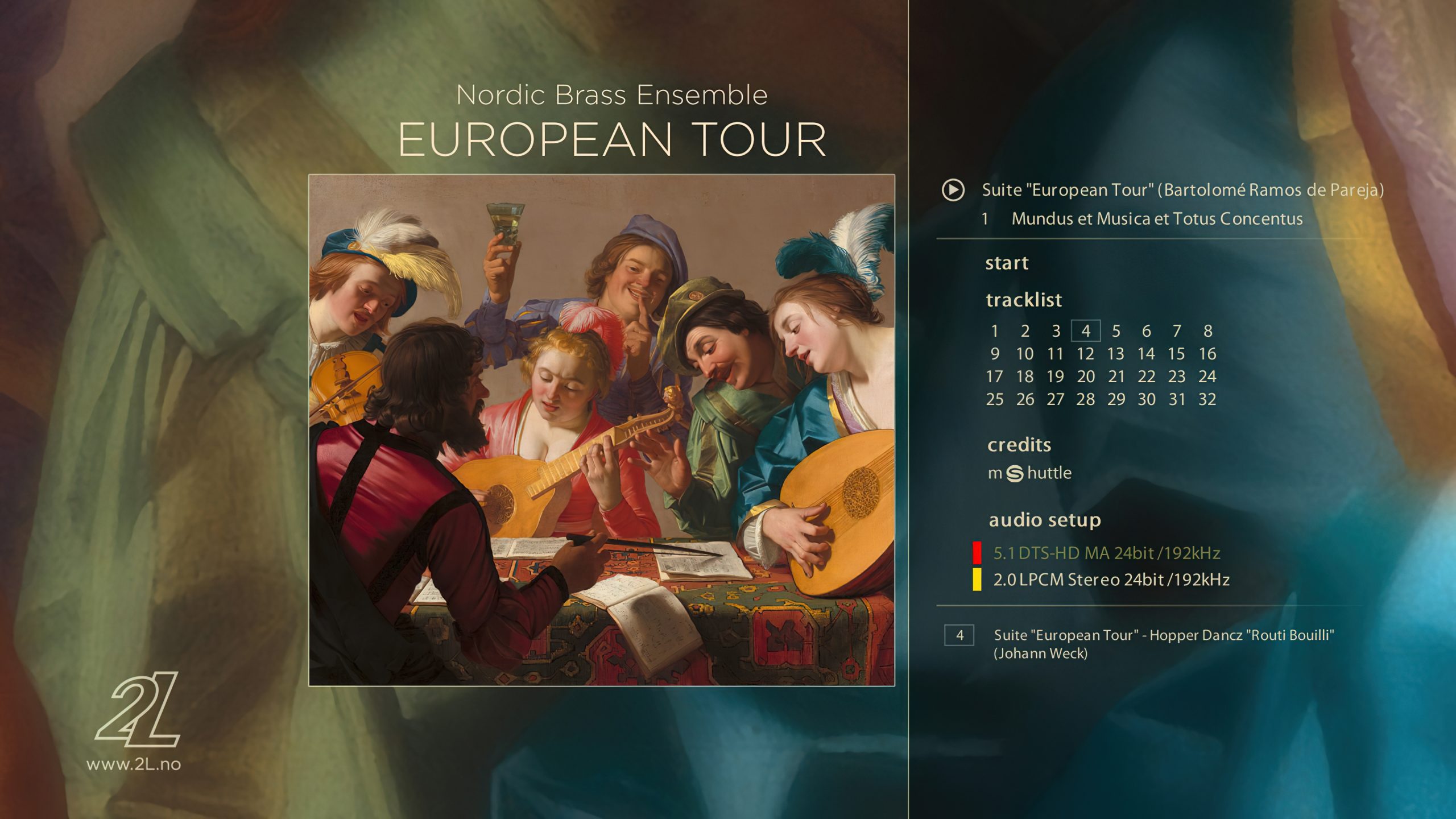
The horn music is reproduced in a holographic and enveloping hemisphere of sound. Although there are no height channels on the soundtrack, it is effectively scaled up to three dimensions, without sounding artificial. Just even more gigantic, than with a 5.1 setup. The virtual speaker channels combined with the height channels really do the trick.
It also pulls well in the brass winds, and the percussion has a large and beautiful sound base. It sounds good from the drumhead, on the whole this gives a pretty magnificent music experience.
An acoustic live performance of Dua Lipa in stereo gets a completely different soundscape with the HT-A9 than with a soundbar. The sound hangs in the air, and spreads outwards to the sides of the room. It is on music that this system really excels in comparison to the soundbars. If film and music are equally important to you, this is a great choice. With music in stereo, you can also choose whether you want to recreate in just stereo, or whether you activate Immersive AE to inflate the stereo track into three dimensions. It works better on some recordings than others, we think it especially has something to do with acoustic ballads and country, and with classical. While fast electronic rhythms and hip-hop become more fussy.
Competitors
Sony HT-A9 sounds very good, also the price taken into account. Admittedly, the midrange reproduction in the Samsung HW-Q960A, for example, is even greater, and after our meeting with the affordable Klipsch soundbor Cinema 600, there is reason to believe that the Cinema 800 and especially 1200 have more energy in both midrange, but also physical bass power. But the actual tonal quality of Sony is hard to beat, and the system also gives the Sonos Arc a wakeup call in terms of quality.
You can probably set up a surround system with separate components, which gives the Sony system competition. But it is not certain that it will be that easy. A surround receiver with Dolby Atmos easily and a complete 5.1.2 speaker system with Atmos channels will soon cost more than the Sony system – including subwoofer. And it will in no way be as easy to set up and as decor friendly as the HT-A9.
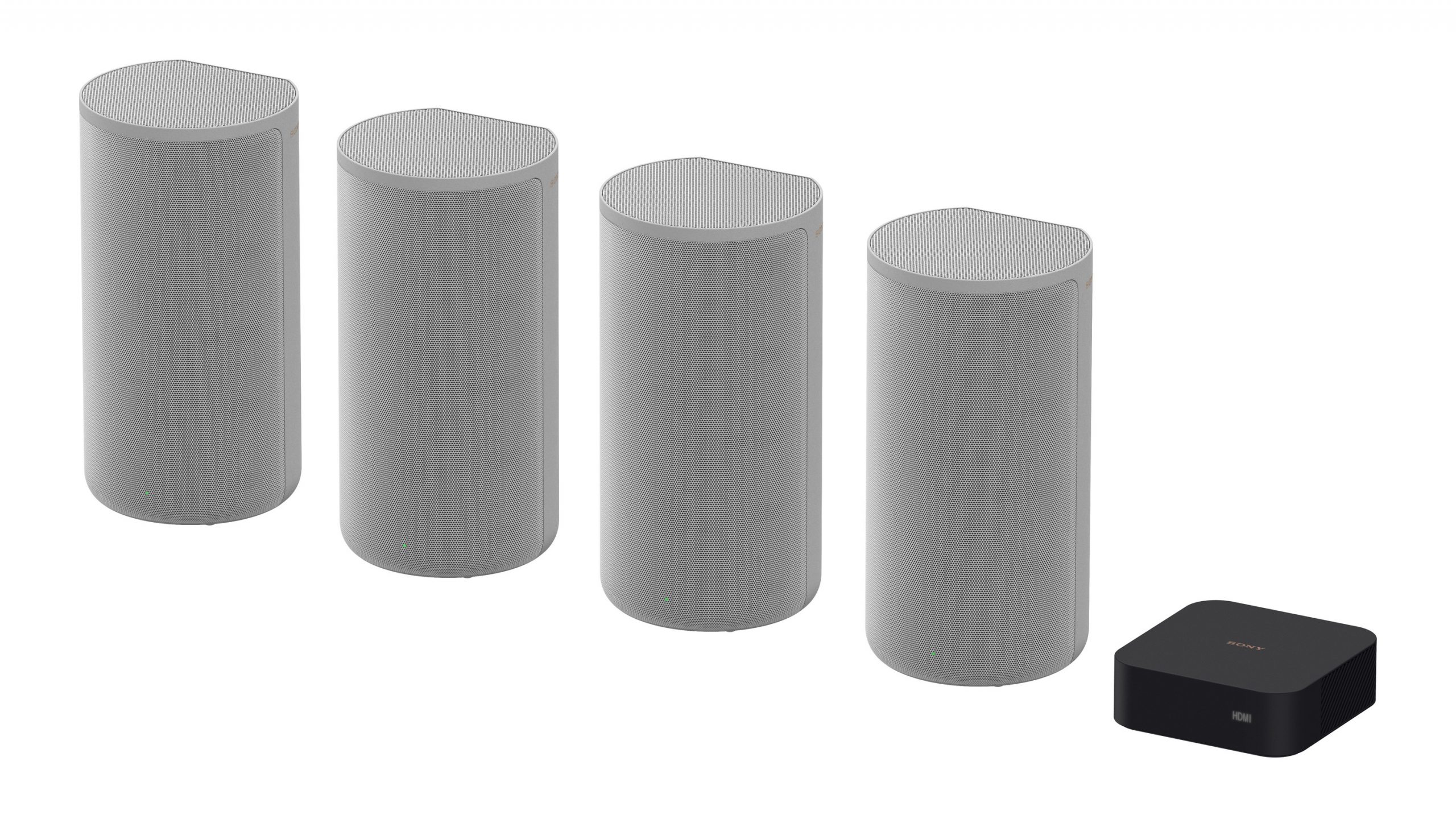
Sony HT-A9: Conclusion
The Sony HT-A9 provides true 3D surround sound, while at the same time solving an annoying problem. Namely that not everyone are able to place the speakers in a completely symmetrical layout.
The sound system sounds very good, and the fact that the front and rear speakers are the same size gives a more seamless sound image, than with a larger soundbar and a couple of small rear speakers.
The system is not cheap, but it gives back in the form of a well-balanced soundscape with enough power and thrust to get lots of fun out of the popcorn blockbusters, in addition to giving much better sound to music, than any soundbar can. A very successful do-everything-solution, in other words.
The center channel can be a bit diffuse, but owners of a latest generation Sony Bravia TV can use the TV as a center channel. They will therefore get even more from the setup.

We think
Giant, seamless sound image. A really big holographic bubble of sound. Balanced and resolved sound image. Not as dependent on speaker placement as other systems. We definitely recommend the subwoofer, which increases the price a bit. The center channel on film was first really precise together with a Sony OLED TV of the latest kind.
1599 €
Specifications
- HDMI: 1 in (8K 60 Hz / 4K 120 Hz), 1 out (eARC)
- Digital input: N0
- Network: Wi-Fi, Ethernet
- Wireless: AirPlay 2, Chromecast, Spotify Connect, Bluetooth (AAC, LDAC, SBC)
- Audio formats: Dolby Digital, TrueHD, Atmos, DTS, DTS-HD MA, DTS: X, Sony 360, PCMReality Audio
- Voice control: Only passive
- Analog in: No
- Subwoofer: Optional
- Dimensions (hub): 15 cm x 5.2 cm x 15 cm (W x H x D)
- Dimensions (speaker): 31.2 x 14.5 x 16 cm
- Colour: Light gray speakers, black hub
- Web: sony.co.uk
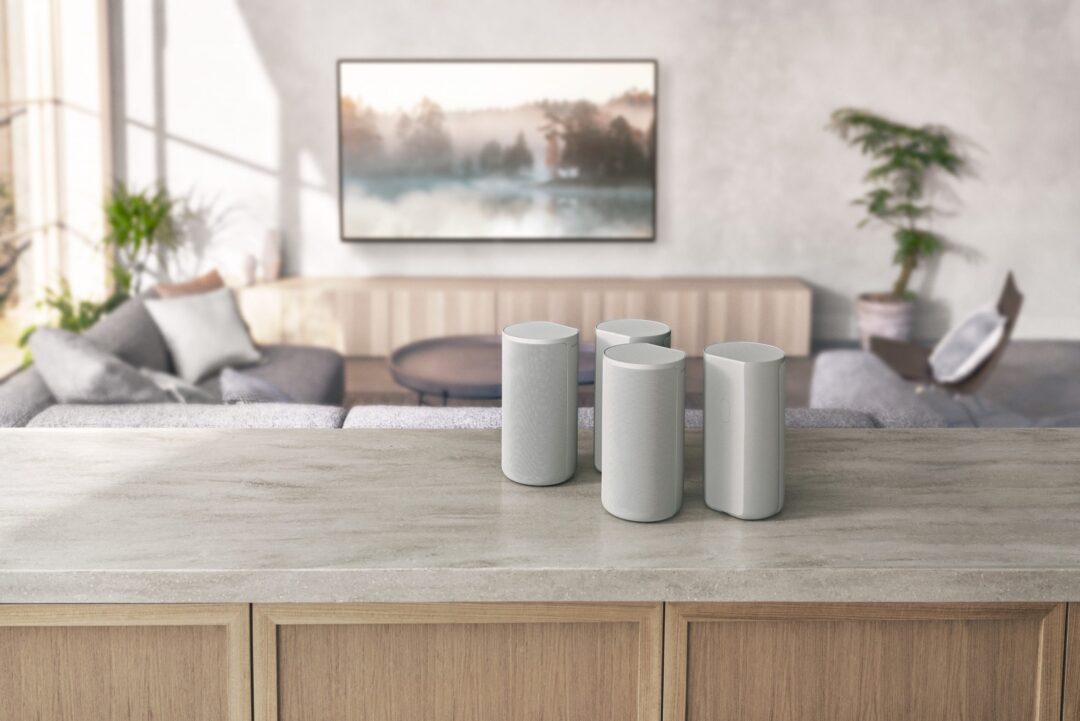

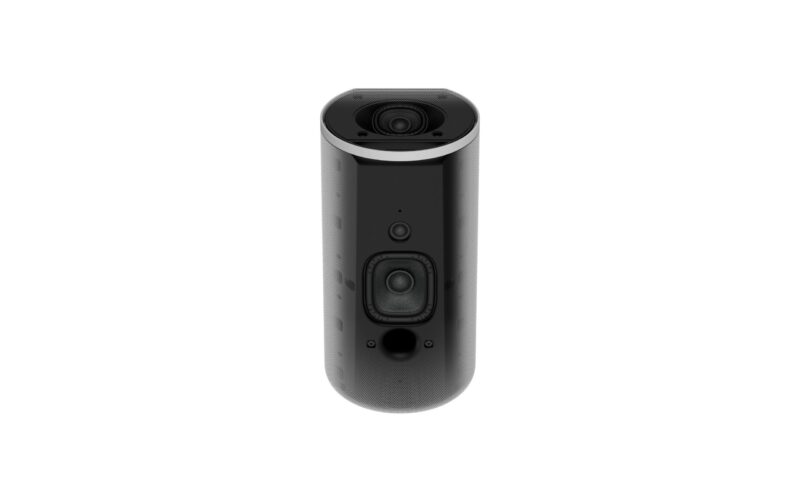
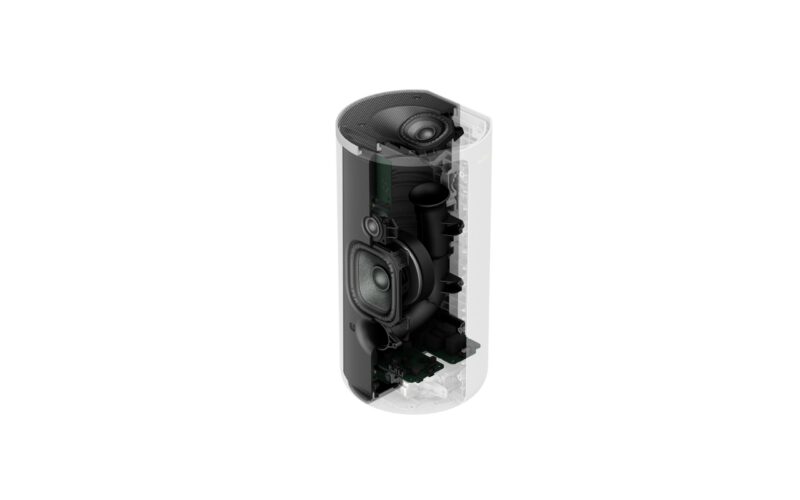
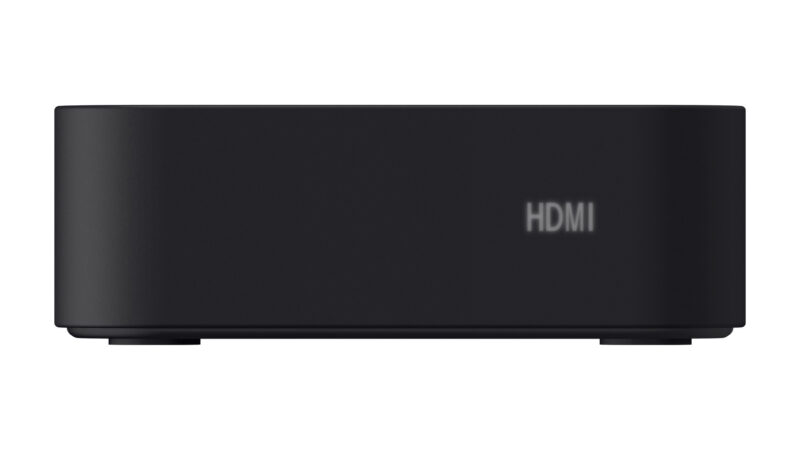
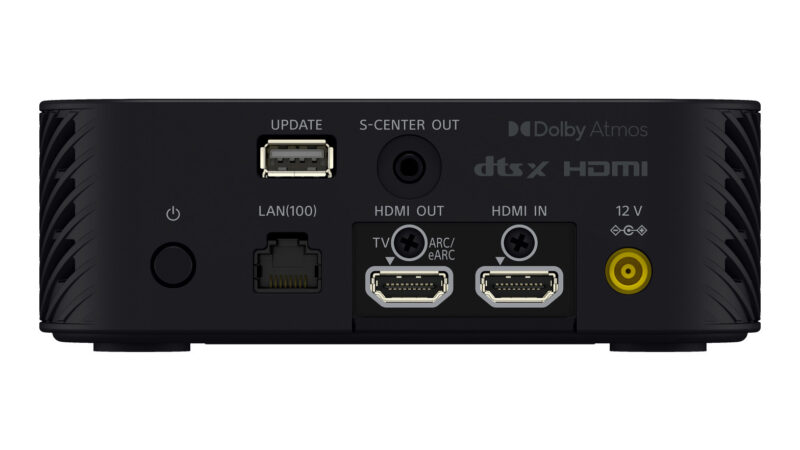
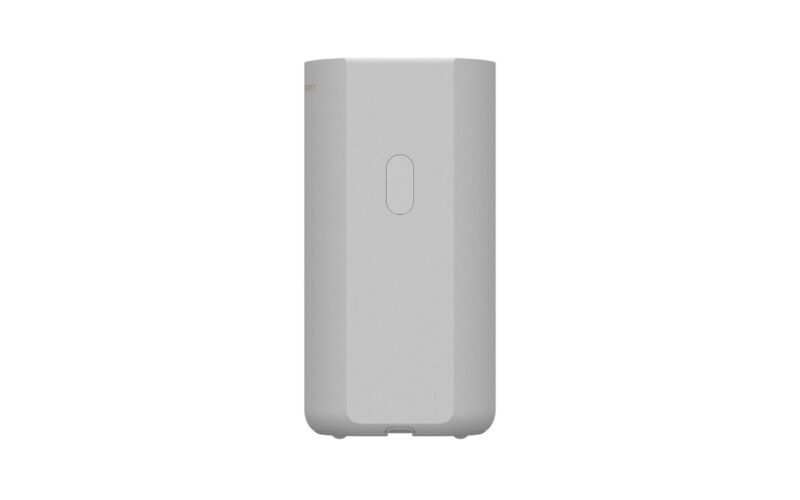
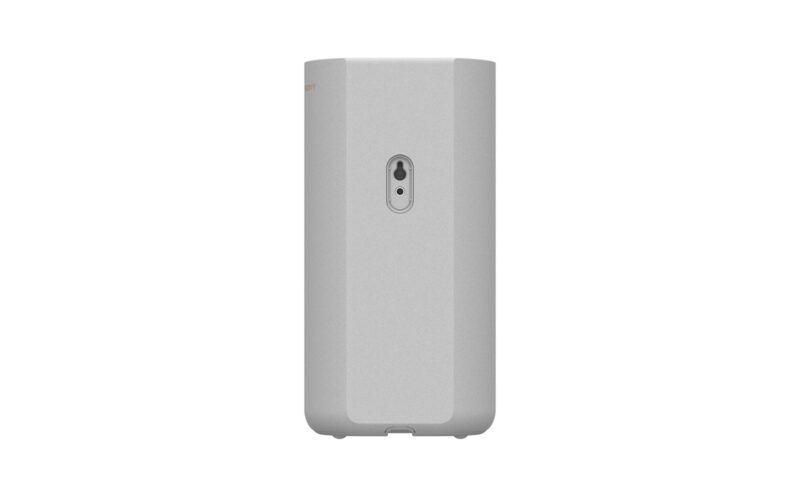
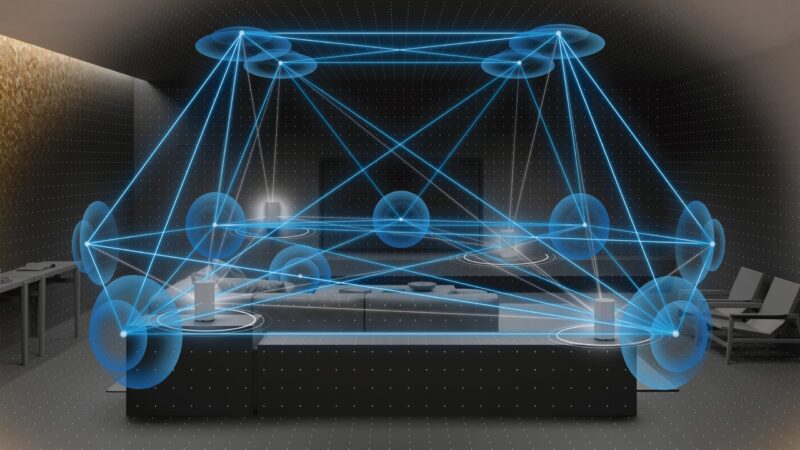
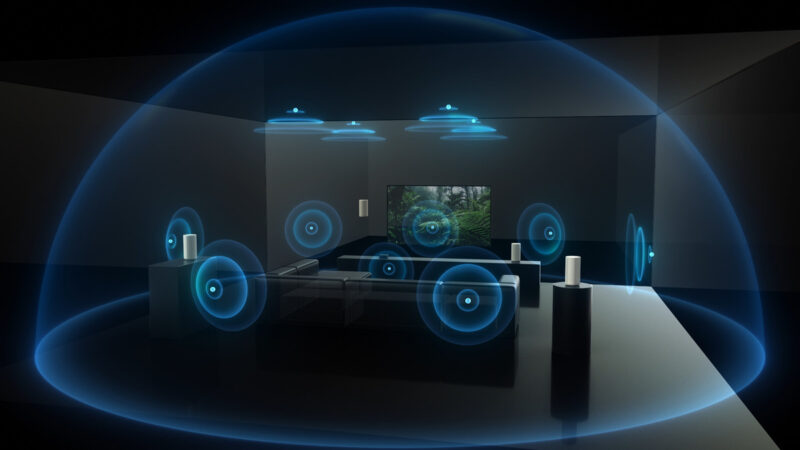
Nice write-up. Have a question for you. I currently have a 5.1 setup in an open floorplan room (14.5 x 19) with ~ 12ft cathedral ceilings (single story house). Just bought a Sony XR77a80j and love it.
I realize my ceiling type is not very conducive to Atmos. However, my question is do you think the A9s would be effective for upfiring Atmos or should I just go with down-firing in ceilings speakers with directional tweeters?
If it was me due to the height of your ceiling I would go with down firing dolby atmos speakers in the ceiling